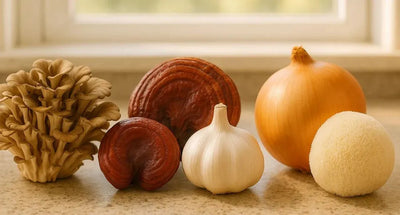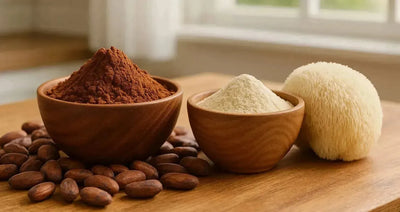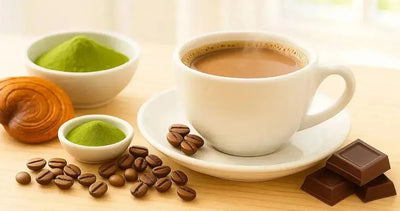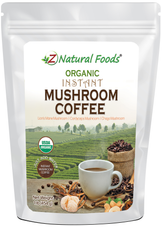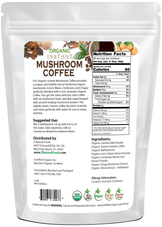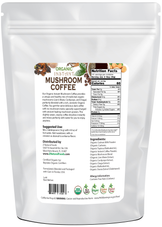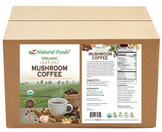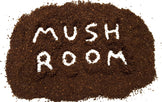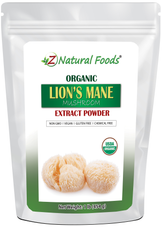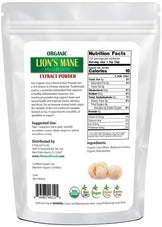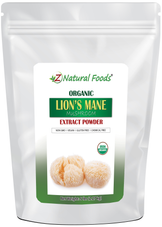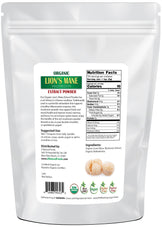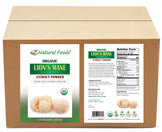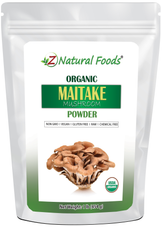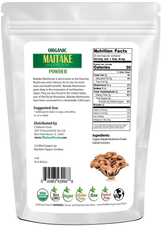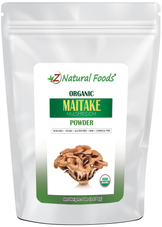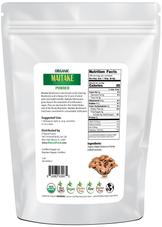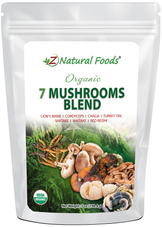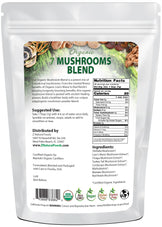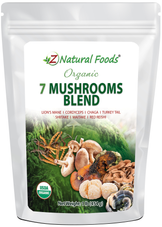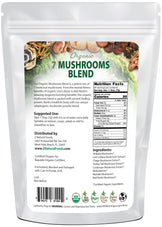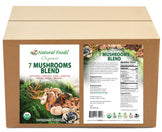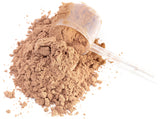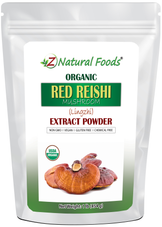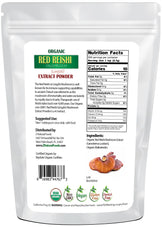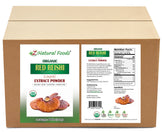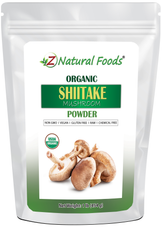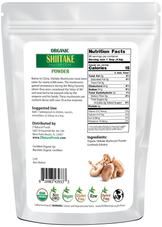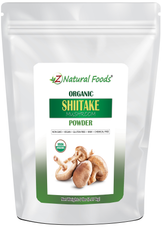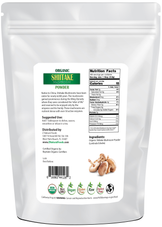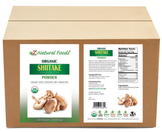Description
Description
Some of the more frequently asked questions we get at Z Natural Foods are related to the benefits and usage of medicinal mushrooms, a very hot topic and the focus of research worldwide.
That’s because edible choice medicinal mushrooms are some of the most revered and well-respected foods of the herbal tonic world, with a rich history going back thousands of years in both eastern and western medicine.
What are the three main parts of a mushroom?
A mushroom is a fungal organism's fruiting body with three distinct parts that develop through its life cycle; 1. Spores, 2. Mycelium, 3. Mushroom, a.k.a. fruiting body. In simplest terms, the mushroom is the fruit of a more extensive fungal network that grows underground.
Backed by human studies, these magnificent tonics are universally considered the “great equalizers” for their ability to profoundly nourish and deeply support a healthy, balanced immune system response.
But these mushroom tonics do so much more;
- Many possess adaptogen-like qualities (go here for more information about adaptogens),
- Possibly supporting a healthy nervous system,
- Nourishing organs and glands,
- Supporting the growth of wisdom, and
- Calming the Shen, aka the spirit.
As we get started in discovering more about the components of this incredible food, here are three very helpful articles that will help you learn more about mushrooms:
- Most nutritious mushrooms (list of 7)
- Which Mushroom Is Good For The Brain? (Explained)
- What is Maitake Mushroom used for? (+5 traditional uses)
As always, we don’t just answer your questions; we give a thorough explanation and provide critical details necessary to understand the topic and break down any points of confusion.
So, today we will answer the question…..
What are the three main parts of a mushroom?
In order to answer this question correctly, it is vital to define what precisely a mushroom is and its relationship to a fungus.
A mushroom is a fungal organism's fruiting body (with three distinct parts that develop through its life cycle as outlined below) or, in simpler terms, the fruit of a more extensive fungal network that grows underground.
Fungus is a more general term describing any member of the fungi kingdom (yeast, mold, mildew, mushroom) and can either be unicellular or multicellular.
The term fungus defines a singular species, while fungi describe multiple species within a family.
Imperfecti fungi represent mold and yeast; much about how they reproduce is still unclear. Perfecti fungi are considered the primary decomposers that grow off of organic material; they are the creators and producers of mushrooms.
There are two primary types of fungi:
- Saprophytes grow on dead or decaying organic matter (reishi are an example).
- Parasitic fungi infect a living host like plants or insects (cordyceps are an example).
They both have the same life cycle, but it comes down to what it chooses as a food source.
A mushroom's life cycle will vary based on the mushroom itself to the environment where it is growing; It can be as short as a day or last for a month.
The three main parts of a mushroom are:
- Spores - Spores are released from the gills of a mushroom cap and are in the surrounding air around us that, under favorable conditions, will land on a substrate they can use as a food source. Once they begin germination, they start growing filament branches called hyphae (their primary mission is to find spores of the opposite sex to bond with). When hyphae continue to grow, a fusing process occurs to create mycelium.
- Mycelium - an underground network that expands and feeds off organic plant matter and produces enzymes that break down the plant material to recycle it into beneficial compounds that return to the soil. This portion life phase is also known as the vegetative body of the organism and the mushroom’s immune system. In nature, mycelium forms large networks of fungal matter by breaking down wood, logs, and other plant matter (also known as substrate), becoming intertwined and creating an inseparable mass. Mycelial networks can live for thousands of years, spreading across massive distances. In eastern Oregon is a 2000-year-old mycelial mat of honey mushrooms 2200 acres in size.
- Mushroom, aka fruiting body: If the environmental conditions are appropriate, the mycelium will produce a mushroom, aka fruiting body, which is the actual reproductive structure of the organism.
At its fully mature stage, it produces spores that will redistribute across plant matter, creating a new mycelium network and allowing the fungus to spread. This is the last point of the life cycle and reproductive cycle.
What is the top part of a mushroom called? (Fruiting body)
The above-ground portion of what is known as a mushroom is called the fruiting body.
In simple terms, the fruiting bodies are like an orange to an orange tree.
As stated above, this is the end stage of the life cycle and where the reproductive process occurs by releasing spores back into the environment and restarting the cycle.
Fruiting bodies often exist for a few days before disappearing and represent about 5% of the entire process.
Because fruiting bodies have been the primary focus of research worldwide, it is believed that they are the primary powerhouse portion of the fungi where all the nourishing compounds are found (each mushroom varying compounds).
For example, cordyceps contain a treasure trove of bioactive compounds like Nucleosides, Polysaccharides, Sterols, Amino Acids, Polypeptides, and Cordycepin.
Lions Maine has Polysaccharides, Polypeptides, Beta-glucans, Prebiotic fiber, Hericenones, and Erinacines.
In a review discussing mushroom compounds as immunomodulators, it was concluded that their broad spectrum potential for supporting a healthy immune system response qualifies them as candidates for immune modulation and immunotherapy.
What is the bottom of a mushroom called? (Mycelium)
The underground portion of the fungi is called mycelium. In simple terms, mycelium is biomass.
Just as mushrooms are not mycelium, mycelium is not mushrooms.
In this area of research, it is believed that all of the compounds found in a high concentration of the fruiting body (like polysaccharides) are not the only driving force behind what makes mushrooms such powerful tonic foods.
The working hypothesis behind mycelium research is that by consuming mycelium, you are ingesting the energy force or precursor for what creates the fruit itself.
Mycelium is the primary plant portion of the mushroom and the longest-living part of the organism (95% of the life cycle).
But don’t make the mistake of thinking that mycelium has no value because it is the foundation of our ecosystem and nature's (land-based) underground food web.
It is responsible for who we are and how everything in nature is created. It is the underground communication system.
As more science emerges, we are learning about novel compounds in mycelium that may have the ability to change the face of modern medicine in unique ways. This area of mushroom science is fascinating for its unlimited potential.
In a study discussing the potent immune-activating properties of turkey tail mycelium, the results demonstrated that “the immune-activating bioactivity of a mycelial-based medicinal mushroom preparation is a combination of the mycelium itself (including insoluble beta-glucans, and also water-soluble components), and the highly bioactive, metabolically fermented substrate, not present in the initial substrate.”
To review all of Z Natural Foods’ incredible mushroom powders, go here:
